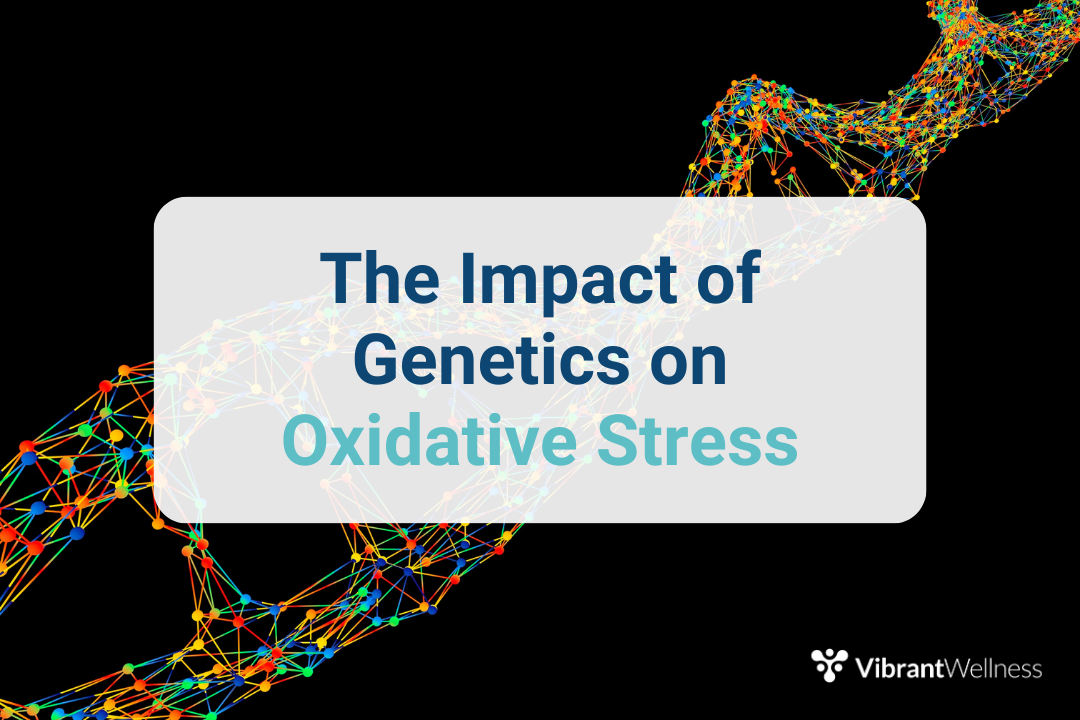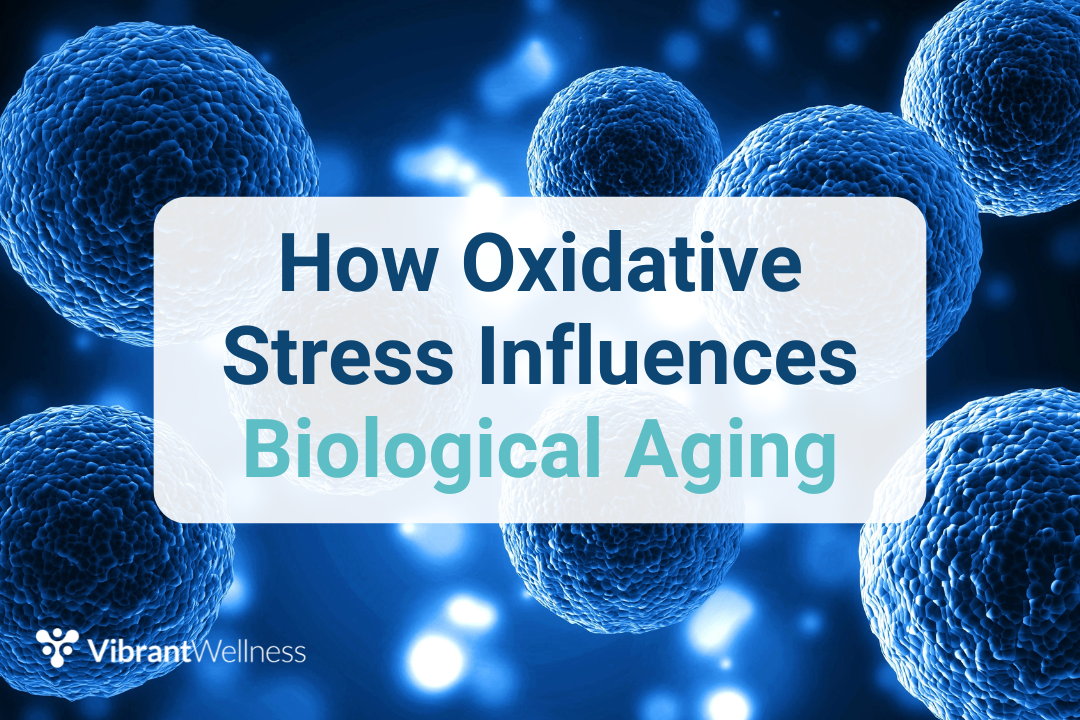Strength Training & Oxidative Stress: How to Optimize Muscle Growth
In the age of biohacking and optimizing wellness, strength training has gained much attention, not only for its ability to sculpt and strengthen but also for its profound benefits against chronic diseases.
General exercise provides many benefits, including boosting brain functioning, supporting overall well-being, and counteracting aging.
Yet, as we engage our muscles and move our bodies, we also navigate the complex phenomenon of oxidative stress—a natural response to physical activity that can help or harm our health, depending on the context.
This article details the delicate interplay between strength training and managing oxidative stress, as well as precision testing and lifestyle strategies to assess oxidative stress levels, optimize muscle growth, and promote longevity.
Table of Contents
Understanding Strength Training & Oxidative Stress

Oxidative stress occurs when there's an imbalance between the production of free radicals and the body's ability to counteract or detoxify their harmful effects through antioxidants.
Free radicals are oxygen or nitrogen-containing molecules, known as reactive oxygen species (ROS) and reactive nitrogen species (RNS), with an uneven number of electrons, making them highly reactive.
While often portrayed negatively, oxidative stress is a natural part of the body's response to environmental and physiological stressors, including intense physical activity.
During vigorous workouts, the body's oxygen consumption can soar, leading to an increased production of free radicals.
This uptick in oxidative stress can be beneficial or detrimental to health, depending on whether levels are balanced.
Beneficial Function of Exercise-Induced Oxidative Stress

On the one hand, oxidative stress acts as a signaling mechanism, promoting the adaptation of muscles to training by stimulating mitochondria production and muscle growth.
Several in vivo studies show that exercise-induced ROS production can contribute to adaptations in skeletal muscle by altering muscle gene expression.2
Physical exercise can strongly influence anabolic and catabolic muscle pathways.
Regular training improves muscle mass and strength by increasing protein synthesis, the number of myofibrils, and the fiber cross-sectional area.1
Exercise both induces protein synthesis and inhibits protein degradation, an effect likely mediated by the lower levels of oxidative stress following the spike during training.
Previous studies have shown that a single exercise session, exceeding a certain intensity or duration, increases ROS production and leads to oxidative damage to lipids, proteins, and DNA.1
However, regular exercise increases ROS formation to a tolerable level, which then induces beneficial adaptations by stimulating antioxidant and damage repair systems.1
This suggests that acute ROS production in healthy individuals is required for skeletal muscle adaption to exercise.
Further, this spike in oxidative stress is only temporary—consistent exercise is linked to lower levels of oxidative stress over time for all ages.1
Risks of Excessive Oxidative Stress

While tolerable levels of oxidative stress are beneficial, when reactive molecules overwhelm the body's antioxidant defenses, they can cause significant damage.
Researchers describe the relationship between exercise and oxidative stress as one of hormesis—an adaptive response of cells to stressors that results in a dose-response relationship where a low dose is beneficial and a high dose is toxic.2
When there is too much oxidative stress, it can cause muscle fatigue, inflammation, and cell damage.
This can happen when you exercise too intensely under extreme conditions, such as hypoxia. Extreme exercise generates much higher free radicals levels that overwhelm cellular antioxidant defenses, leading to protein carbonylation, DNA damage, and RNA oxidation.3
Assessing Oxidative Stress: Precision Testing

Given the influential nature of oxidative stress, accurately measuring and understanding its level of damage is critical in maintaining a proper balance.
The Vibrant Oxidative Stress Profile measures 16 markers of cumulative oxidative damage eliminated from the body in the urine, as well as 32 genetic variants that code for enzymes and antioxidants that can significantly impact oxidative stress response.
This profile measures more analytes than any other test on the market, providing robust insight into oxidative damage to DNA, RNA, lipids, and proteins.
It’s also the only test that pairs cumulative oxidative stress markers with genetic predispositions towards oxidative stress. It allows you to create personalized treatment plans that support the body's natural defense mechanisms while managing exercise-induced oxidative stress.
Optimizing Muscle Growth Through Strategic Strength Training

A well-rounded approach to strength training is essential to maximize muscle growth while minimizing the risk of excessive oxidative stress.
Progressive overload and periodization are fundamental, allowing for gradual increases in workout intensity and varying routines to prevent overtraining.
By gradually increasing the intensity of your workouts and regularly changing your exercises, you can safely improve your fitness while avoiding overworking your body.
Additionally, a diet rich in antioxidants from fruits, vegetables, nuts, and whole grains, alongside adequate protein intake and hydration, plays a crucial role in neutralizing free radicals and supporting muscle repair. Supplementation, under professional guidance, may further enhance this nutritional support.
Recovery and rest are also pivotal in the muscle-building equation, with quality sleep acting as a cornerstone for the body's repair mechanisms.
Further, practicing active recovery techniques and scheduling rest days ensures muscles can rebuild stronger without the detrimental effects of overtraining.
Incorporating stretching and mobility exercises further aids in recovery, improving flexibility and reducing muscle tightness.
This holistic approach to strength training, nutrition, and recovery can promote optimal muscle growth while safeguarding long-term health and well-being, ensuring that your pursuit of physical fitness is both effective and sustainable.
Achieving Optimal Health Through Balance
In the complex mechanisms of exercise-induced oxidative stress, you’ll find a microcosm of the broader principle that underlies all human physiology: the necessity of balance.
While the right amount of oxidative stress catalyzes muscle growth and adaptation and promotes overall health, too much can have the opposite effect. This balance is not merely about enhancing physical performance but is intrinsically tied to longevity and the quality of our lives.
By understanding how to harmonize the intensity of our workouts with our body's natural responses, we can achieve peak physical performance and wellness. This illustrates that the journey to optimal muscle growth is as much about managing biological realities as it is about lifting weights.
Additional Reading
Want to learn more about the complex nature of oxidative stress?
Read these next:
Oxidative Stress & The Foundations for Longevity: A Comprehensive Review
Oxidative Stress: The Key to Unlocking Longevity
References
1. Gomes MJ, Martinez PF, Pagan LU, Damatto RL, Cezar MDM, Lima ARR, Okoshi K, Okoshi MP. Skeletal muscle aging: influence of oxidative stress and physical exercise. Oncotarget. 2017 Mar 21;8(12):20428-20440. doi: 10.18632/oncotarget.14670. PMID: 28099900; PMCID: PMC5386774.
2. Powers, S.K., Radak, Z. and Ji, L.L. (2016), Exercise-induced oxidative stress: past, present and future. J Physiol, 594: 5081-5092. https://doi.org/10.1113/JP270646
3. Bianca Maria Scicchitano, Laura Pelosi, Gigliola Sica, Antonio Musarò, The physiopathologic role of oxidative stress in skeletal muscle, Mechanisms of Ageing and Development, Volume 170, 2018, Pages 37-44, ISSN 0047-6374, https://doi.org/10.1016/j.mad.2017.08.009.
The general wellness test intended uses relate to sustaining or offering general improvement to functions associated with a general state of health while making reference to diseases or conditions. This test has been laboratory developed and its performance characteristics determined by Vibrant America LLC and Vibrant Genomics, a CLIA-certified and CAP-accredited laboratory performing the test. The lab tests referenced have not been cleared or approved by the U.S. Food and Drug Administration (FDA). Although FDA does not currently clear or approve laboratory-developed tests in the U.S., certification of the laboratory is required under CLIA to ensure the quality and validity of the test
 By
By



